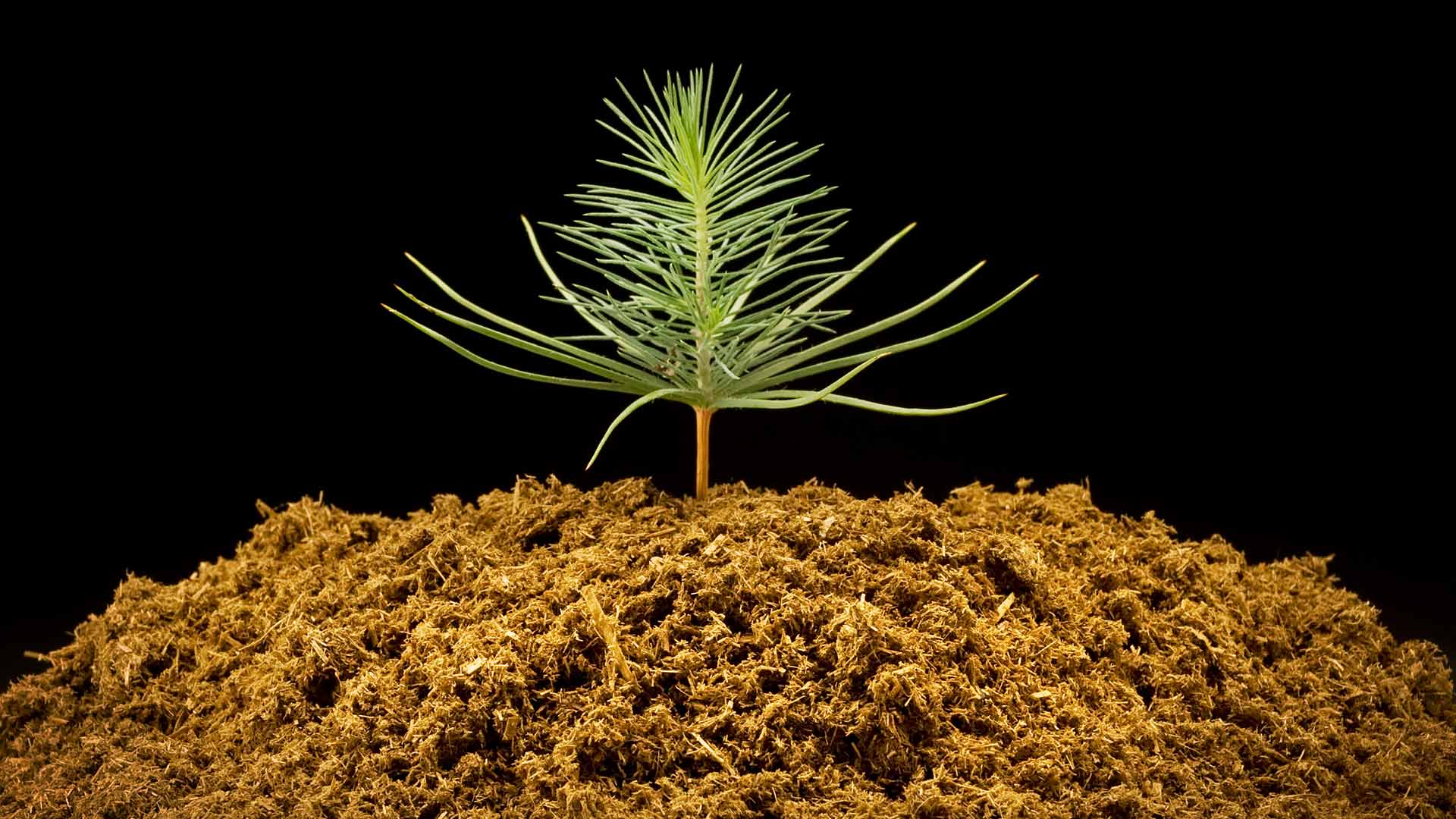Morris, Minn. — First cow beds, now garden beds.
A leading Minnesota milk producer is expanding the uses for anaerobically-digested dairy manure solids.
Riverview LLP, which milks 30,000 cows in Stevens and Swift counties, hopes to market its digested manure solids as a garden soil amendment and peat alternative. AURI is helping Riverview characterize the physical and chemical attributes of the digester solids and set up horticulture research trials.
Riverview was one of the first Midwest dairies to install manure digesters, which generate renewable methane — a natural gas substitute that can be burned for heat or electric power. Riverview’s three anaerobic digesters produce enough green electricity to supply 3,200 homes.
After leaving the digesters, dairy manure is mechanically separated. The liquid portion is injected into cropland as fertilizer. The solid portion is returned to the barns as comfy cow bedding.
Riverview recycles about half its manure solids to its own barns, and sells some to other dairy barns for bedding, earning about $12 per ton. The remainder is applied to cropland, fetching about half the value of bedding.
The company also sells small amounts of digested manure to local gardeners, who show up at the dairy and shovel the humus-like material into the back of their pickups. As the digested solids won praise — and repeat sales — from gardeners, “we started thinking it might be a good fit for the garden and nursery markets,” says Adam Zeltwanger, Riverview business developer. “This would be a higher-value market.”
Peat hard to beat
There is a demand for lower-cost organic materials that could be substituted for peat, a main component in potting mixtures and garden soil amendments, says Bert Swanson of Park Rapids. Swanson, a retired University of Minnesota horticulture professor, is a nursery industry consultant and president of the Minnesota Nursery and Landscape Association.
The U.S. horticulture and landscape industry consumed about 1.5 million metric tons of peat in 2010, more than half of it imported, according to the U.S. Geological Survey. The average value was just under $25 per ton.
As a growing medium, peat is hard to beat, says Kurt Johnson, a research fellow at the U of M Natural Resources Research Institute in Duluth. “Peat has a lot of advantages. It’s very consistent and does what growers want it to do.”
But peat mining is expensive and the permitting process is long and complicated. Harvesting depends on having stretches of dry weather, making supply unpredictable. And peat is part of a complex wetland ecosystem, so draining peat bogs raises a host of environmental issues, he says. In addition, companies are required to restore peatlands after harvest, adding to costs.
Advantages for digested manure?
Digested dairy solids could have several advantages as a horticulture product.
However, digested manure’s pH and soluble salt content could limit its use in potting mixtures, Swanson says. Digested solids may contain more nutrients than desirable for many horticultural applications, too, Johnson says. By contrast, peat furnishes few nutrients — “an advantage because growers can control nutrients better,” he says. Other questions about the material include its storage characteristics, air-holding capacity and nutrient-leeching risk, as well as digestion’s effects on weed seed viability, carbon-nitrogen ratios and product consistency.
That’s where AURI comes in. The Institute is sponsoring horticultural trials and material analysis at the U of M West Central Research and Outreach Center (WCROC) in Morris.
Trials will compare seed germination, rooting and plant growth in traditional peat-based potting mixtures and digested manure solids. Both greenhouse and outdoor trials are being planned, says Steve Poppe, WCROC horticulture scientist, who will oversee the research.
“One of the biggest questions is what plants will grow well in the material,” says Swanson, who is helping to design the experiments. The trials will include conifers and deciduous trees and annual and perennial plants in both containers and beds. “There’s potential for all of them,” Swanson says. “We’ll also be testing the percentage of product that can be used in various growing media.”
Similar research at the University of Florida has evaluated the use of composted dairy manure, called Cowpeat, in potting mixtures. Composted manure is similar to digested manure solids, says Al Doering, AURI coproducts scientist. The Florida trials showed that Cowpeat could replace up to 60 percent of peat without affecting seed germination, rooting or plant growth, Doering says.
Hard hit by recession
The nursery and landscape industry has been hit hard by the housing market collapse and the recession, Swanson says. Minnesota nursery industry sales have dropped significantly from the early and mid-2000 peak years, when they reached about $2 billion, he says. Horticulture crop producers are especially hurting. According to the 2009 U.S. Census of Horticulture, the sales value of trees, sod, bedding plants and other horticultural crops rose just 10 percent from 1998 to 2009, compared to a 60 percent increase for commodity crops.
However, home gardening has been a bright spot in the industry, Swanson says, as more people grow their own food in response to the weak economy. Meanwhile, a 2010 market report from the Freedonia Group, an Ohio-based international business research company, predicts good growth for fertilizers and growing media. “These two segments are benefiting from the expanding consumer trend favoring value-added products such as fast-acting and easy-to-use fertilizers and premium soils.”
Swanson says the nursery industry would welcome a lower-cost growing medium — if it performs well. “I see a lot of potential for it as a soil amendment for home gardens. And if horticultural crop producers can get a reduction in costs, that would benefit the whole industry, too.”

